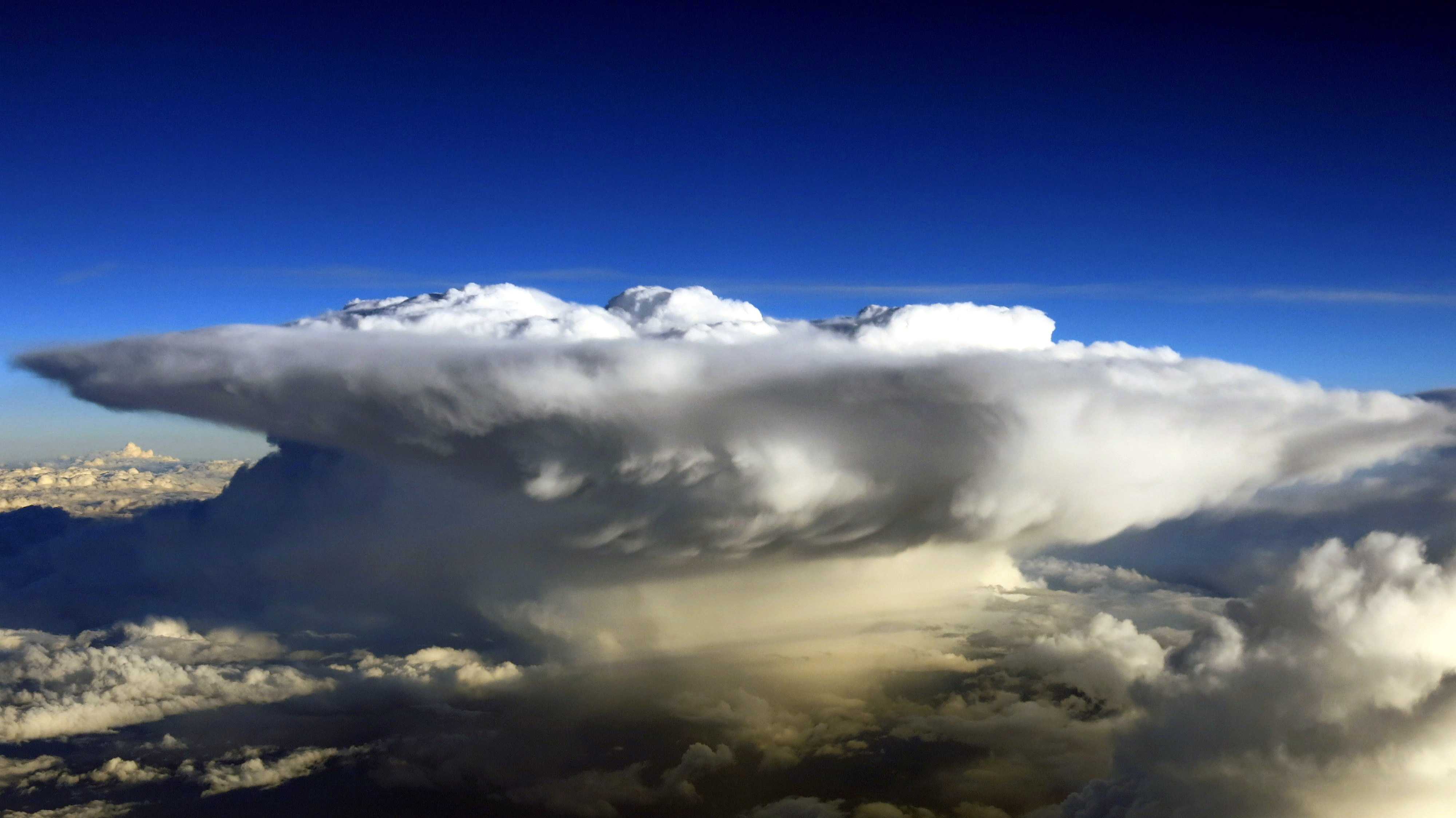Cumulonimbus
(Section 2.5.2.10)The base of Cumulonimbus is usually found below 2 km (6 500 ft). The top often reaches higher than 10 km (35 000 ft). The vertical extent of Cumulonimbus ranges from 3 km to rarely more than 15 km (10 000 – 50 000 ft).
Below the cloud. Viewed from below, Cumulonimbus generally looks dark. Under the base, which is often ragged, pannus clouds in the form of ragged shreds are frequently observed. They occasionally constitute a kind of dark roll (arcus) under the forward and lower outer edge of the Cumulonimbus. Visibility may be poor because of precipitation (heavy showers of rain, snow or hail). Turbulence is often severe.
Within the cloud. Cumulonimbus is composed of water droplets and, especially in its upper portion, ice crystals. It also contains large raindrops and, often, also snow crystals, snowflakes, snow pellets, ice pellets or hailstones. The water droplets and raindrops may be substantially supercooled, and can lead to rapid aircraft icing, particularly when the supercooled water drops are interspersed with ice crystals.
Within the lower and middle portions of the cloud, it is dark and the visibility is very low, often zero. In the upper portions, the illumination may be strong but the visibility is poor. Vertical currents (ascending and descending) often exceed 15 m/s (50 ft/s), with the downdrafts mostly in areas of heavy precipitation. Turbulence is severe.
Electrical discharges (Saint Elmo’s fire) may occur. They seem to be most frequent where the temperature is between 0 °C and –2 °C.
Above the cloud. Depending on its stage of development, Cumulonimbus can appear similar either to Cumulus congestus, with its strong contrasts in luminance, or to dense Cirrus, often in the shape of huge plumes or anvils, with wavy or bulging parts. When sunlit, it is dazzling with very great contrasts in luminance. The main body of a Cumulonimbus sometimes emerges from a layer of stratiform clouds. Cloud veils of various dimensions (pileus or velum) may surround the cloud. Usually no haloes are observed. Parts of rainbows can sometimes be seen in rain showers through gaps in the cloud below.





